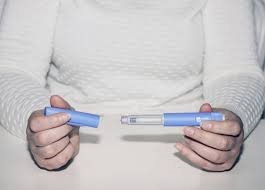Biobanking Market: Trends, Key Players, and Future Outlook 2024-2032
Biobanking is an essential component of the life sciences and healthcare sectors, facilitating the collection, storage, and management of biological samples for research and therapeutic purposes. The biobanking market was valued at USD 72.1 billion in 2023, driven by the surge in genomic research aimed at discovering innovative therapeutic interventions. This blog provides an in-depth analysis of the biobanking market, examining its dynamics, competitive landscape, segmentation, regional analysis, and future prospects.
Market Dynamics
Drivers of Market Growth
The biobanking market‘s robust growth is fueled by several key drivers:
- Increased Genomic Research: The advent of personalized medicine and precision therapeutics has led to an increase in genomic research. Biobanks provide invaluable resources for such research by offering well-preserved biological samples, facilitating the discovery of novel biomarkers and therapeutic targets.
- Technological Advancements: Innovations in biobanking technologies, including automation, advanced storage solutions, and data management systems, enhance the efficiency and reliability of biobanking processes. These advancements reduce human error, increase sample throughput, and improve data accuracy, making biobanking more effective and accessible.
- Rising Prevalence of Chronic Diseases: The growing incidence of chronic diseases such as cancer, diabetes, and cardiovascular disorders necessitates extensive research for new treatments. Biobanks play a crucial role in this research by providing high-quality biological samples for disease study and drug development.
Market Restraints
Despite its promising growth, the biobanking market faces several challenges:
- Ethical and Legal Issues: The collection, storage, and use of human biological samples raise significant ethical and legal concerns. Issues related to informed consent, privacy, and data security are critical challenges that biobanks must address to maintain public trust and comply with regulations.
- High Costs: Establishing and maintaining biobanks require substantial investment in infrastructure, equipment, and skilled personnel. The high operational costs can be a barrier, especially for smaller institutions and research centers.
Opportunities
The biobanking market offers numerous opportunities for growth and development:
- Personalized Medicine: As the focus shifts towards personalized medicine, the demand for high-quality biological samples for genetic and molecular research increases. Biobanks are well-positioned to meet this demand by providing diverse and well-characterized samples.
- Expansion in Emerging Markets: Emerging economies in Asia-Pacific, Latin America, and Africa present significant growth opportunities for biobanking. Increasing healthcare investments, improving infrastructure, and rising awareness of the importance of biobanking are driving market expansion in these regions.
Challenges
The biobanking market also faces several challenges:
- Data Privacy: Ensuring the confidentiality and security of donor information is paramount. Biobanks must implement robust data protection measures to prevent breaches and maintain donor trust.
- Standardization: The lack of standardized protocols and procedures across biobanks can lead to inconsistencies in sample quality and data. Establishing universal standards is essential for ensuring the reliability and comparability of biobanking resources.
Market Forecast (2024-2032)
The biobanking market is expected to continue its upward trajectory:
- 2024 Market Size: The market is projected to reach USD 76.9 billion.
- 2032 Market Size: By 2032, the market is expected to grow to USD 131.1 billion.
- CAGR: The market is anticipated to grow at a compound annual growth rate (CAGR) of 6.89% during the forecast period.
Competitor Landscape
The biobanking market is characterized by the presence of several key players who drive innovation and growth. These companies are involved in various aspects of biobanking, including sample collection, storage, and data management. The major players include:
- Thermo Fisher Scientific Inc.: A leading provider of biobanking solutions, offering a wide range of products and services for sample storage and management.
- Brooks Automation, Inc.: Specializes in automated storage systems and temperature-controlled solutions for biobanking.
- Qiagen N.V.: Offers advanced technologies for sample collection, stabilization, and analysis.
- Tecan Group Ltd.: Provides automated liquid handling solutions and laboratory instruments for biobanking.
- Hamilton Company: Known for its automated sample storage systems and laboratory robotics.
- Chart Industries, Inc.: Supplies cryogenic storage equipment and solutions for biobanking.
- PHC Holdings Corporation: Offers a range of biobanking equipment, including ultra-low temperature freezers.
- Becton, Dickinson and Company (BD): Provides biospecimen collection and processing products.
- Merck KGaA: Develops innovative solutions for biobanking and life sciences research.
- Panasonic Healthcare Holdings Co., Ltd.: Specializes in biomedical equipment and storage solutions.
- STEMCELL Technologies Inc.: Offers a variety of products for cell biology research and biobanking.
- Lifenet Health: Focuses on tissue and organ donation, providing biobanking services for regenerative medicine.
- Promega Corporation: Supplies reagents and tools for biobanking and molecular biology research.
- Greiner Bio-One International GmbH: Provides laboratory products and services for biobanking.
- Lonza Group AG: Offers biobanking solutions for cell and gene therapy research.
Market Analysis
A comprehensive analysis of the biobanking market includes several critical aspects:
- Patent Analysis: Reviewing key patents filed by major players to understand the technological advancements and innovations in the market.
- Grants Analysis: Examining major grants awarded to biobanking projects, highlighting areas of significant research and development focus.
- Funding and Investment Analysis: Analyzing funding rounds and investments in biobanking companies to identify trends and key financial backers.
- Partnerships and Collaborations: Evaluating strategic partnerships and collaborations among leading companies to understand their collective efforts in advancing biobanking technologies and services.
Market Segmentation
The biobanking market can be segmented based on various criteria:
- By Type of Biobank:
- Disease-Oriented Biobanks: Focus on collecting samples related to specific diseases for targeted research.
- Population-Based Biobanks: Collect samples from diverse populations to study genetic variations and public health trends.
- By Application:
- Therapeutic Applications: Use of biobanked samples in developing new treatments and therapies.
- Research Applications: Use of biobanked samples in academic and clinical research.
- By Sample Type:
- Blood Products: Includes whole blood, plasma, serum, and other blood-derived samples.
- Human Tissues: Includes solid tissue samples from various organs.
- Cell Lines: Cultured cells used in research and drug development.
- Nucleic Acids: Includes DNA, RNA, and other genetic materials.
- By Storage Type:
- Manual Storage: Traditional methods of storing samples using manual processes.
- Automated Storage: Advanced storage systems using automation for efficient sample management.
Regional Analysis
The biobanking market exhibits distinct regional trends:
- North America: The largest market, driven by substantial investments in research and development, advanced healthcare infrastructure, and the presence of major biobanking companies.
- Europe: A significant market with a strong focus on collaborative research projects and government support for biobanking initiatives.
- Asia-Pacific: Rapidly growing market due to increasing healthcare investments, improving infrastructure, and rising awareness of biobanking’s importance.
- Latin America: An emerging market with potential for growth, supported by increasing healthcare expenditure and biobanking initiatives.
- Middle East & Africa: Developing market with expanding healthcare infrastructure and growing interest in biobanking.
Impact of COVID-19 on the Biobanking Market
The COVID-19 pandemic has significantly impacted the biobanking market:
- Disruptions: Initial disruptions in supply chains and operations due to lockdowns and restrictions.
- Accelerated Research: The pandemic accelerated research efforts related to COVID-19, leading to increased demand for biobanked samples.
- Long-term Implications: Enhanced recognition of the importance of biobanking in global health research and preparedness for future pandemics.
Future Outlook and Trends
The future of the biobanking market looks promising, with several trends shaping its trajectory:
- Technological Innovations: Continued advancements in automation, cryopreservation, and data management technologies will enhance biobanking efficiency and capabilities.
- Increasing Government and Private Investments: Growing investments from governments and private entities will support biobanking initiatives and infrastructure development.
- Expansion of Biobanking Services: The scope of biobanking services will expand, encompassing new applications and research areas, driving market growth.



